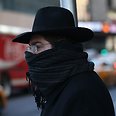
NY Jews see dramatic rise in poverty
Increase in poverty outpaces growth of New York Jewish community, UJA-Federation report reveals. One in five Jewish households is poor; nearly half of Jewish children and diverse groups are affected by poverty throughout eight-county area
More than 560,000 people in approximately 200,000 Jewish households are poor or near-poor, and 45% of the children in Jewish households now live in poor or near-poor households.
More Jewish people are affected by poverty in the eight-county New York area than there are Jews living in other large Jewish communities such as Chicago or Washington, DC.
There has been a rapid growth in Jewish poverty in recent years, including in suburban areas. In 1991, there were about 180,000 people living in poor Jewish households; 20 years later, this number has doubled to 360,000, an increase that significantly outpaces the 14% growth of the Jewish community as a whole.
Approximately 90% of poor Jewish households are located in New York City, as are 84% of near-poor households. Yet poverty in the suburbs has also increased, growing by 86% since 2002.
“With this latest report of the ‘Jewish Community Study of New York: 2011,’ we have a detailed picture of one of the greatest challenges facing the Jewish community today,” said Jerry W. Levin, president of UJA-Federation.
“When coupled with the previously released comprehensive and geographic profile reports, we now have a remarkably thorough and actionable understanding of the New York Jewish community as a whole. UJA-Federation, our network of agencies, and others in our community can now use these insights to advance our mission in the months and years to come.”
Widely diverse groups affected
The new report found that Jewish poverty in the eight-county New York area affects widely diverse groups of Jewish households. Single-parent households, households that include a person with a disability, and others who are unemployed or underemployed are also heavily represented among the Jewish poor. But it is also concentrated in Hasidic, Russian-speaking, and senior households, which account for two-thirds of the poverty in the Jewish community.“The sheer scale of Jewish poverty in the New York area is immense, and the Jewish community has a sacred responsibility to care for those in need,” said John S. Ruskay, executive vice president and CEO of UJA-Federation of New York.
“UJA-Federation and its network agencies already lead multiple efforts to address the needs of impoverished members of the New York Jewish community. Working with our network agencies including the Metropolitan Council on Jewish Poverty, we provide a broad range of services and provide swift and effective responses following crises, ranging from the recession to Hurricane Sandy.
"Moving forward, we will use the study to develop laser-like approaches that can maximize the availability of services and help the most vulnerable live with more security, dignity, and, we hope, the embrace of community.”
“The numbers largely confirm what we’ve seen happening in grassroots Jewish communities, making clear to us that this wrenching situation is only growing in scope,” said William E. Rapfogel, CEO of the Metropolitan Council on Jewish Poverty, a network agency of UJA-Federation of New York that played a key consulting role in this report.
“Poverty is a complex problem that touches far more people than many would think, and these findings will help us further focus and better advocate as we continue to provide critical services to all those who are struggling.”
'Alarming growth rate'
The decennial poverty report defined poor households as ones whose annual income is less than 150% of the 2010 federal poverty guideline. For the first time, the report includes comprehensive data about Jewish near-poor households, households with annual income between 150% and 250% of the 2010 federal poverty guideline. A significant portion of poor and near-poor households include someone who is either working full-time or self-employed.“Too many people in the Jewish community are either living in poverty or at risk of slipping into poverty,” said Scott Shay, chair of the “Jewish Community Study of New York: 2011.”
“While the federal government is the primary safety net for most poor and near-poor families, a central value of the Jewish community has for millennium been caring for the poor and we therefore should use the data from the report to guide our help in protecting the most vulnerable, as well as to offer support, services, and advocacy.”
UJA-Federation engaged Jewish Policy and Action Research (JPAR) to conduct the Jewish Community Study of New York. JPAR is a strategic alliance between Ukeles Associates, Inc., and Social Science Research Solutions, and together they have worked on 21 Jewish community studies across the United States. Dr. Jacob B. Ukeles was the lead author of the poverty report.
“Poverty in the Jewish community continues to grow at an alarming rate, much faster than the Jewish community as a whole,” said Dr. Ukeles. “This report will help emphasize the magnitude of the problem, and provide a more data-driven framework for communal decision making.”










